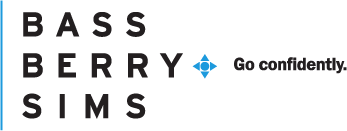In a lawsuit for patent infringement, “[t]he court in exceptional cases may award reasonable attorney fees to the prevailing party.”1 Patent litigation often is costly and an award of attorney fees can substantially affect the court’s final judgment. As a result, both plaintiffs and defendants often request that the court deem a case “exceptional” and award attorney fees.
Notwithstanding the regularity with which parties request an “exceptional case” finding, patent litigants often are disappointed or even disillusioned with the “exceptional case” analysis. For starters, it is unusual for a district court to find a case “exceptional,” even when it enters judgment of infringement or non-infringement as a matter of law. When the district court takes the rare step of finding a case “exceptional,” the Federal Circuit often disagrees with the district court’s analysis, its conclusion, or both. Perhaps the most popular criticism of the “exceptional case” rule is that it does not sufficiently dissuade patent “trolls” from bringing unmeritorious suits in an attempt to extract a nuisance settlement.
The United States Supreme Court now has an opportunity to address these perceived shortcomings. Under existing Federal Circuit law, a case is “exceptional” if the losing party’s positions were (1) objectively baseless, and (2) asserted in subjective bad faith.2 This week, the United States Supreme Court agreed to hear two cases to address the application of this two-part test.
In the first case, Highmark, Inc. v. Allcare Health Management Systems, Inc.,3 the district court entered a final judgment of non-infringement and found the case exceptional because patent claims were asserted frivolously and the patentee engaged in litigation misconduct. A panel of the Federal Circuit agreed that one patent claim was asserted frivolously, but it found that the district court’s other bases did not support an exceptional case finding.4 Accordingly, it remanded the case for the district court to calculate attorneys’ fees based on the single frivolous asserted claim. The Federal Circuit then issued a deeply divided decision denying rehearing en banc to determine whether the panel should have given deference to the district court’s determination of objective baselessness.5 This week, the Supreme Court agreed to consider that question.6
In the second case, Icon Health & Fitness, Inc. v. Octane Fitness, LLC,7 the district court entered summary judgment of non-infringement, but declined to find the case exceptional. A panel of the Federal Circuit affirmed the judgment of non-infringement and only briefly addressed the exceptional case issues. The accused infringer argued that the patentee took unreasonable claim construction positions, improperly attempted to claim privilege in pre-suit investigation documents, and brought the litigation in bad faith. The panel declined the accused infringer’s request to lower the standard to “objectively unreasonable” without a showing of bad faith “to rebalance what it alleges as the power of large companies in patent infringement litigation.” The Federal Circuit panel succinctly stated that “[w]e have no reason to revisit the settled standard for exceptionality.” This week, however, the Supreme Court granted the accused infringer’s petition for certiorari to determine whether the “rigid and exclusive two-part test” for exceptionality contravenes statutory intent.8
Interestingly, both of these cases raise the “exceptional case” question from the defense side. That is, when a defendant is awarded judgment of non-infringement, in what circumstances should it also be awarded its attorneys’ fees? In recent months, policymakers have shown increased interest in the effect that patent “trolls” are having on patent litigation, innovation, and, ultimately, the national economy.9 The Supreme Court’s decisions on the “exceptional case” standard may be influenced by these policy and public opinion issues surrounding “trolls.”
Any change to the “exceptional case” test could substantially alter the litigation playing field and settlement dynamic in future cases, and we will provide an update when the Supreme Court issues its opinions next year.
If you have any questions about the content of this alert, please contact one of the authors listed above or any member of our Intellectual Property and Technology team.
________________________________________
1 35 U.S.C. § 285 (2013).
2 See Highmark v. Allcare Health Mgmt. Sys., Inc., 687 F.3d 1300, 1308 (Fed. Cir. Aug. 7, 2012).
3 Highmark v. Allcare Health Mgmt. Sys., Inc., 701 F.3d 1351 (Fed. Cir. Dec. 6, 2012).
4 Highmark v. Allcare Health Mgmt. Sys., Inc., 687 F.3d 1300 (Fed. Cir. Aug. 7, 2012).
5 Highmark v. Allcare Health Mgmt. Sys., Inc., 701 F.3d 1351 (Fed. Cir. Dec. 6, 2012).
6 Highmark v. Allcare Health Mgmt. Sys., Inc., 2013 U.S. LEXIS 5130 (Oct. 1, 2013).
7 Icon Health & Fitness, Inc. v. Octane Fitness, LLC, 496 F. App’x 57 (Fed. Cir. Oct. 24, 2012).
8 Octane Fitness, LLC v. Icon Health & Fitness, Inc., 2013 U.S. LEXIS 5133 (Oct. 1, 2013).
9 See, e.g., FACT SHEET: White House Task Force on High-Tech Patent Issues (June 4, 2013); Executive Office of the President, Patent Assertion and U.S. Innovation (June 2013); U.S. Government Accountability Office, Report to Congressional Committees, Intellectual Property: Assessing the Factors that Affect Patent Infringement Litigation Could Help Improve Patent Quality (Aug. 2013).




